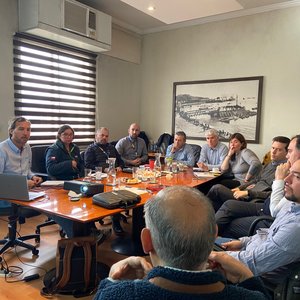Using a new tank design and better nutrition, California Sea Grant researchers Raul Piedrahita and Doug Conklin have developed a superior way to rear halibut larvae that increases larval survival rates from less than five percent to 50 percent. Their nonpolluting, energy-efficient culture system for halibut could eventually be operated away from the coast, where real estate is more affordable. Their prototype is also revitalizing interest in the potential for stocking coastal waters with hatched halibut. “The hatchery technologies we are developing for aquaculture can easily be used for producing juveniles for stock enhancement,” Conklin said.
The mild-tasting California halibut (Paralichthys californicus) is not raised in commercial aquaculture operations, but many consider it an excellent candidate for domestication—especially in light of the drop in commercial catches of the fish from highs exceeding 2,000 tonnes to 450 tonnes fish tolerate crowding and grow fast even when reared two layers thick on the bottom of a tank. Adults spend their lives nearly motionless on the sea floor, which suggests feed costs for farmed halibut could be relatively low. Because a halibut hatchery has operated in Redondo Beach for more than a decade, providing eggs and larvae for scientific experiments, basic techniques for hatching the fish are already in place.
California’s strict pollution regulations, as well as the high costs of energy and coastal real estate, prompted Piedrahita and Conklin to try developing a closed recirculation system for rearing fish—one where new water does not flow in and wastewater does not flow out. They built a prototype system with an innovative, low-energy biofilter that continuously removes nitrogenous waste, but to date their tank system is not entirely closed. It requires a steady input of fresh seawater to maintain optimum growing conditions for fish, but the amount of fresh seawater needed is reduced significantly. They also improved diets for young halibut and are studying the best time to wean halibut larvae from live prey to formulated diets.
For more information
For more information contact: Raul Piedrahita, Professor, Agricultural Engineering, University of California, Davis, rhpiedrahita@ucdavis.edu; Douglas Conklin, Associate Professor, Animal Science, University of California, Davis, deconklin@ucdavis.edu










